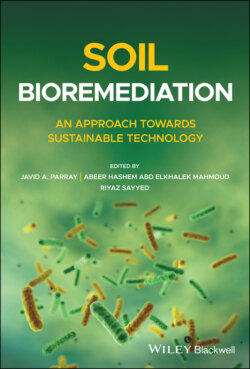Читать книгу Soil Bioremediation - Группа авторов - Страница 39
2.6.1.3.1 Enzymatic Degradation
ОглавлениеEnzymes known to hydrolyze many organophosphorus pesticides are made from a variety of aquatic species. These enzymes are known as organophosphoric anhydrases, although they are also known as paraoxonase, esterase, phosphotriesterase, diisopropylfluorophosphatase, and parathion hydrolase. However, these enzymes can hydrolyze a variety of organophosphorus acetylcholinesterase inhibitors. Among the aquatic species, enzymes have been identified that are partially characterized by salmon, invertebrates such as Rangia cuneata, protozoa Tetrahymena thermophila, and various thermophilic and other bacteria. These enzymes evolved in response to the metabolism of naturally occurring organophosphates and halogenated organic compounds. Several researchers have highlighted the presence of organophosphorus hydrolase (Aryldialkylphosphatase) genes in microbial cells that degrade organic phosphorus compounds and hydrolases as the main enzyme behind the process. An enzyme derived from an over‐produced P. diminuta undergoes hydrolysis of a phosphate bond in an organophosphorus pesticide molecule resulting in an up‐to 100‐fold reduction in toxicity. The use of hydrolases and related genes to understand the complex interactions between microorganisms and pesticides can significantly improve understanding of biodegradation processes and facilitate bioremediation [126, 129, 131].
